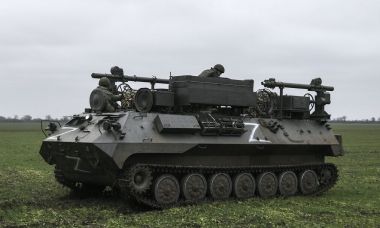Introduction
The Ukrainian Air Force has acknowledged that one of the reasons for the sluggishness of their counterattack is the overwhelming electronic combat capabilities of Russia. According to a spokesperson for the Ukrainian Air Force, Yuri Ignat, Russia has surpassed them in the field of electronic combat. This acknowledgment sheds light on the challenges faced by Ukraine in their attempts to push back against Russian aggression.
The Impact of Electronic Combat on the Ukrainian Counterattack
Russia’s advanced electronic warfare tactics have had a significant impact on the effectiveness and progress of Ukraine’s counterattack. Rather than resorting to traditional methods such as missile strikes, Russia has employed disruptive tactics to bring down Ukrainian unmanned aerial vehicles (UAVs). These tactics include the use of various interference techniques that force UAVs to crash.
The Ukrainian military relies heavily on UAVs as “eyes in the sky” to monitor enemy movements and gather intelligence for effective counterattack strategies. Additionally, smaller drones equipped with projectiles or anti-tank gunheads can be deployed for targeted strikes against enemy positions. However, Russia’s superior electronic warfare capabilities, specifically in disrupting and neutralizing UAVs, have hampered Ukraine’s ability to effectively utilize this technology.
To mark the coordinates of Russian command posts, artillery batteries, electronic warfare systems, and ammunition depots, Ukraine typically deploys reconnaissance UAVs. Subsequently, when Ukrainian artillery units fire on these designated targets, UAVs are used to confirm the accuracy of strikes or make necessary adjustments to ensure precision.
However, the Royal United Services Institute (RUSI) highlights the significant losses suffered by Ukraine, with an estimated 10,000 UAVs being rendered inoperative each month due to Russian electronic warfare systems. This clearly illustrates the extent to which Russia’s technological advantage has impacted Ukraine’s counterattack efforts.
Russian Electronic Warfare Capabilities
Russia’s electronic warfare units have displayed a high degree of sophistication and adaptability in their operations. These units operate at the company level and constantly adjust their operational plans to maintain an upper hand. Furthermore, Russia has strategically deployed a dense network of electronic warfare systems along a 1,200 km front line. Within this network, key systems are positioned every 10 km, demonstrating a comprehensive and well-planned approach.
Operating at a distance of approximately 6 km from the front lines, these electronic warfare systems are responsible for disabling and neutralizing UAVs used by the Ukrainian military. The effectiveness of these systems is further amplified by their ability to disrupt communication channels and intercept real-time exchanges of enemy command posts. This level of insight into Ukrainian military operations puts Russia at a significant advantage on the battlefield.
New Russian Electronic Warfare Systems
Russia continues to innovate and develop advanced electronic warfare systems that pose significant challenges to Ukrainian forces. Notably, the Shipovnik-Aero system is particularly difficult to detect and possesses the capability to simulate multiple types of signals. This versatility enables it to effectively neutralize UAVs by employing a range of countermeasures.
In addition to Shipovnik-Aero, the Krasukha-4 and Borisoglebsk-2 electronic warfare systems have emerged as formidable tools on the battlefield. These systems are often referred to as “invisible assassins” due to their ability to disrupt navigation signals and assume control of Ukrainian UAVs. By effectively countering Ukrainian UAVs, these systems severely limit Ukraine’s intelligence-gathering capabilities and hinder their response to Russian aggression.
Ukrainian UAVs Affected by Russian Electronic Warfare
Ukrainian reliance on UAVs for reconnaissance and targeted strikes has faced significant setbacks due to Russian electronic warfare endeavors. Even popular commercial models such as DJI, widely used by Ukrainian forces, have experienced diminished effectiveness due to persistent interference. This interference has impaired their ability to transmit important situational data and communicate with ground units.
Moreover, the Bayraktar TB2 UAV, often hailed as a game-changer for the Ukrainian military, has essentially disappeared from the battlefield. Initially considered a strategic asset capable of altering the balance of power, the Bayraktar TB2 fell victim to Russian electronic warfare systems, effectively eliminating its operational capabilities.
Conclusion
The Ukrainian Air Force’s recognition of Russia’s superior electronic warfare capabilities highlights the lopsided nature of the conflict. Ukraine acknowledges the need to bolster their own electronic combat capabilities and laments the delayed development of such measures. Russia’s advanced electronic warfare tactics, coupled with their ability to decode Ukrainian communication systems, have given them a significant advantage on the battlefield.
As Ukraine continues its counterattack efforts, the influence of Russia’s electronic warfare capabilities remains a significant challenge. Reinforcing electronic combat capabilities and implementing strategies to counter Russian interference will be vital for Ukraine’s ability to effectively respond to Russian aggression and protect its interests.
Vũ Anh (Theo CNN)


